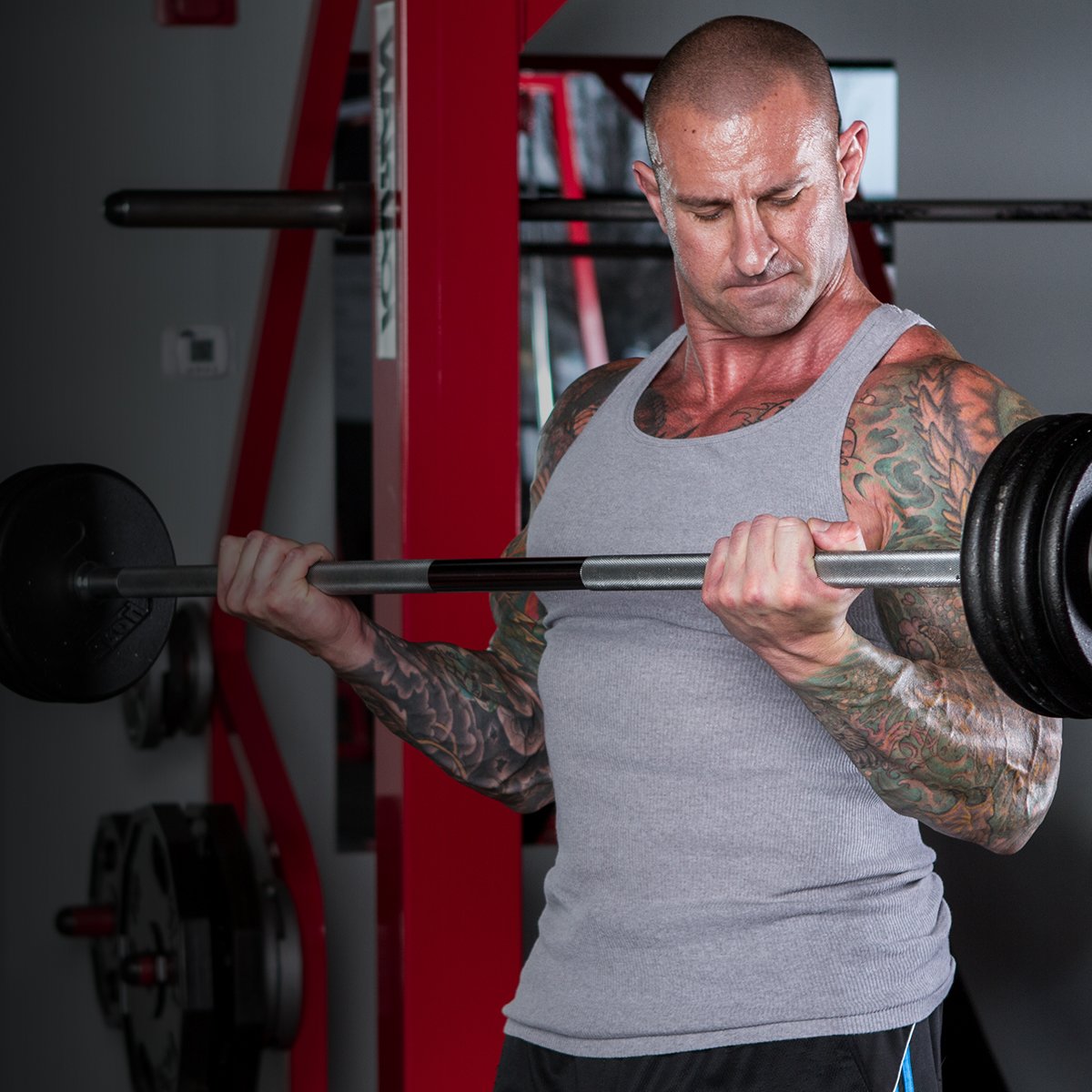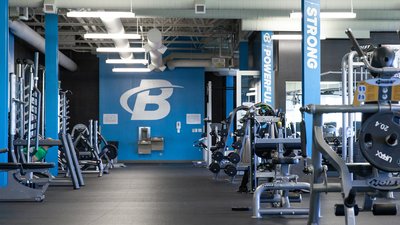I'm not usually the biggest guy in the room. Growing up I was always the smallest kid in class. I graduated high school at 115 pounds soaking wet. So when a guy comes up to me in the gym and tells me how he's tried everything and can't put on muscle, I feel fairly well qualified to call bullshit.
Typically, the first thing I want to know from this so-called "hardgainer" is what he ate over the past couple of days. While asking, I prepare myself for the inevitable explanation of how he eats so much, but his metabolism is just too fast. Then we'll talk about his training.
The end result of years of these experiences, plus breaking my own ass to put on weight, almost always reaches the same conclusions: You're not eating enough, you eat like crap, and your training sucks.
Nobody ever wants to hear that, but in 9 out of 10 cases, it's the truth. But instead, hardgainers would prefer to blame their genetics. DNA, it seems, has left them devoid of the ability to build muscle. Alas, they must suffer forever as the smallest guy in the room.
Maybe not. Over the years I've learned my lesson about blaming my metabolism. I plugged away in the gym, struggling for a pound of muscle here and there. Don't get me wrong, I got much stronger; that was primarily my training focus, but I didn't put on much size. I have, however, tried pretty much everything and learned what works and what is a waste of time.
Ready to stop spinning your wheels and start growing? Follow the full program, The One-Month Hardgainer Solution, in BodyFit Elite. You can track your workouts in the BodyFit app, swap out lifts to match your equipment, and watch demonstration videos of every movement in every workout!
Then, take a good, hard look at how you've been eating and training up to the start of that program. Here's what I suspect you'll find.
Reason 1. You're Not Eating Enough
If you call yourself a hardgainer, I can say with 99 percent certainty that your diet is the cause. Either you don't eat enough, or what you do eat is crap. Most likely, it's a combination of both.
For instance, it's become really trendy for men to utilize some form of intermittent fasting over the past few years. But if you're a skinny guy trying to put on muscle, this probably isn't the most effective way to go.
So before you send me an email proclaiming the excellence of your 18/6 fasting schedule for muscle-building, save both of us the time. It's difficult—not impossible, but very difficult—to get the kind of calories you need when using extended fasts.
I understand that nobody wants to be a calorie-counter. Fine, but that means you need to learn to eat intelligently when it comes to macronutrients. I've found that hardgainers benefit from getting at least 1.5 g of protein per pound of bodyweight, 2 g of carbs and .5 g of fat.
These are general numbers that I've seen work effectively with my clients and myself. They're not set in stone, but they are a good place to start. If you're trying to put on muscle and failing, the chances are good that you aren't hitting these kinds of numbers with your diet.
Which brings us to the second part of how your diet can hold you back:
Reason 2. You Eat Like Crap
One of the problems with processed foods—i.e., crap—is that even the ones that contain meat, like hot dogs and fast food, are surprisingly weak protein sources. They're far better carb and fat sources, but only to a certain point—after all, they're crap.
So if that's how you're trying to meet the "eating enough" benchmark, ask yourself: Are you really getting enough protein? Probably not. That number I mentioned above, 1.5 g per pound, is on non-training days.
On training days, with the addition of pre- and post-workout nutrition, that number should get closer to 2 g per pound. This is simply easier to do with solid whole food protein sources like quality meat and dairy rather than, um, crap.
If you're truly getting enough protein but still not putting on muscle, your next step is to look at your carbs. Ironically enough, considering a typical American diet, this is where many guys miss the target. We're often told to focus on protein so much so that we forget that carbs are important, too. The immense recent backlash against carbs hasn't helped, either. Adequate carb intake not only fuels you for your workouts; it also keeps your glycogen stores full, which signals your body that it's OK to grow.
Once you've got your carbs and protein in line make sure you're getting adequate fat in your diet. Dietary fat is crucial to hormonal function and it's hard to build muscle when you've got the testosterone levels of a teenage girl.
Reason 2(a). Your Workout Nutrition Is Crap
Nutritional timing around your workout is especially important if you are trying to put on muscle. You already drink a post-workout protein shake—which is great, but what about before your workout?
The inclusion of a pre-workout shake does a couple of things. First, it helps up your calories and protein total for the day—always good things when focusing on adding weight. Second, it supplies your body with amino acids and carbs for the coming workout. I've found that for many, simply including this shake can be the game-changer they need.
Intra-workout nutrition, meaning during your workout, is another often overlooked element that plenty of people have found helped kickstart their gains. Sipping on amino acids throughout your workout is great for recovery, sure, but it can also impact muscle-building. This is something every frustrated hardgainer should consider.
And of course, you need to get some protein after you train. Not just shakes, but food. Duh.
Reason 3. Your Training Sucks
I'm not sure if guys take it more personally when they're told their diet sucks, or their training. It seems about equal.
Hey, nobody wants to admit they're doing something wrong. That's natural, especially for men. But if your training isn't producing results, you need to accept that maybe it's just not that effective. There are many pieces of the training puzzle that can go awry, but let's focus on the three main offenders.
1. Crappy Exercise Selection
If upon entering the gym you immediately start off with triceps kickbacks before progressing to the seated calf-raise, you're doing it wrong.
Exercise selection is one of the most important aspects of training. If your exercises suck, your results are going to suck. You should be focusing the overwhelming majority of your training on multi-joint compound movements like squats, deadlifts, standing overhead presses, bench presses, pull-ups, and rows.
I've written entire programs that used nothing but those movements. In the program below (Yes, there is a program! I'm not just here to pick on you.) you'll get an idea of how to choose effective exercises. Pay special note to how many are compound movements, and the select number of isolation exercises.
2. Never Changing Your Rep Range
Manipulation of rep ranges is pretty much the heart of basic program design. Your body adapts rather quickly to a rep range, so if you've only been doing 3 sets of 10 for years, that's probably one of the reasons you stopped seeing results.
An effective program makes use of multiple rep ranges to target many strength qualities and muscle fibers. And while we're talking about reps…
3. Using the Wrong Volume
Volume refers to the number of sets and reps you do of a given exercise. Don't use enough volume, and you won't elicit results. Use too much, and you won't recover and could get hurt. Assuming you're using a variety of rep ranges—you are, aren't you?—you need to manipulate the number of sets you do in order to encourage adaptation.
Look at it this way: If you're doing sets of 4 and only do 3 sets, you've done 12 reps total for that exercise. Think you're going to build muscle from 12 reps? Nope. Now if you do 6 sets of 4 instead, you're approaching the money zone.
A great general rule is to aim for approximately 25-40 reps if you're trying to build muscle. Obviously this isn't concrete: you can go as low as 15 or as high as 50. Between 25 and 40 is generally accepted to be the sweet spot, however.
There's lots of room for variation, which means there are lots of different ways for you to build muscle in the weight room.
Month of Mass Hypertrophy Program
By now you should get the idea: Eat, lift, eat some more. So how about a strength program that works? The program below is based on lifting four days per week: two days will on the upper body and two on the lower body.
This month of training utilizes lots of heavy, compound movements and lots of different rep ranges. This ensures you'll get maximum muscle recruitment while developing multiple strength qualities and a range of muscle fibers.

The Last Set
One final thing I'd like to touch on is the last set. I'm usually a strong proponent of keeping away from failure as much as possible in the gym. Training to failure too often is a surefire way to compromise your results. Strategically training to failure, however, can be one of the best things you can do in the gym.
In this program, I suggest taking your last set on most exercises, particularly your main movements, to the point of technical failure. This means you can't do another rep with reasonable technique. In other words, if you need a spotter to assist you—even if it's just fingertips on the bar!—you need to stop. You can't complete any further reps on your own.
With adequate nutrition there is no reason why a trainee can't put on at least 4-5 pounds of muscle over the course of the program. Just make sure to monitor your weight over the course of the four weeks. If you're not moving in the right direction, modify your nutrition as necessary. You don't need to count calories, but you definitely need to have an accurate idea of what you're consuming.

